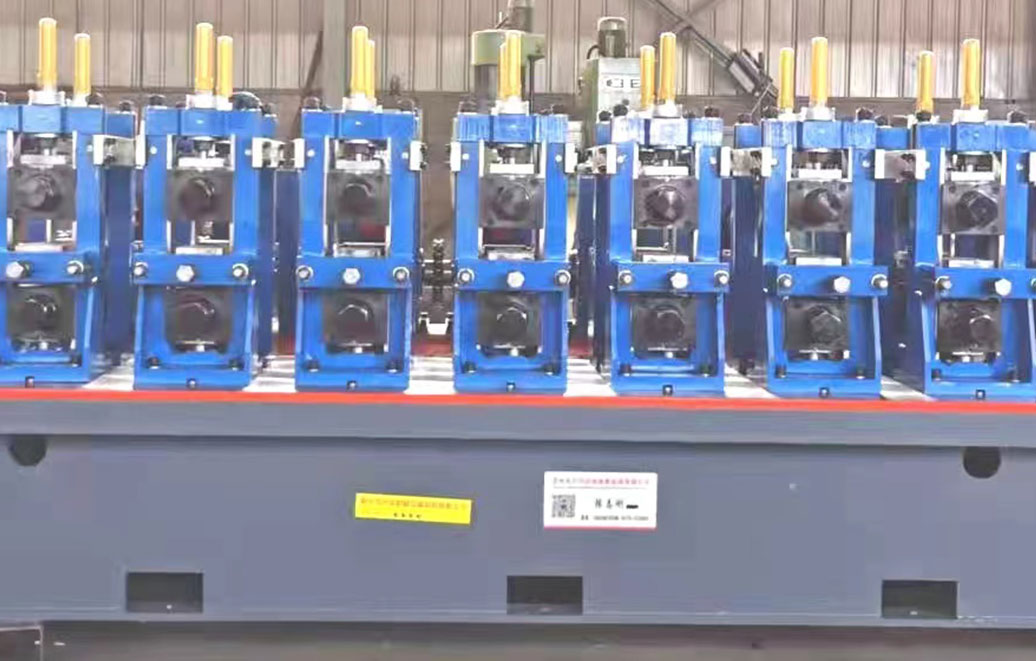tube straightening machine working principle
Understanding the Working Principle of Tube Straightening Machines
Tube straightening machines play a crucial role in various industries by ensuring that metal tubes and pipes are perfectly straight for further processing or use. The necessity for straightened tubes arises in numerous applications, including construction, automotive, and manufacturing sectors. This article delves into the working principles of tube straightening machines, exploring their design, operation, and applications.
Overview of Tube Straightening Machines
Tube straightening machines are specialized equipment designed to correct bends and deformities in metal tubes. These machines operate on the principle of applying mechanical force to straighten deformed tubes, ensuring that they meet specific dimensional and structural specifications. The importance of these machines cannot be understated, as improperly straightened tubes may lead to assembly issues, structural weaknesses, and operational failures in the end applications.
Working Principle
The working principle of tube straightening machines can be broken down into several key stages loading, alignment, and straightening.
1. Loading The process begins with loading the tube or pipe into the machine. Most tube straightening machines are equipped with a loading mechanism, ensuring that the tube is securely held in position before the straightening process begins. This loading mechanism can vary in design, depending on the tube size and the machine's specifications.
2. Alignment Once the tube is securely loaded, the next step involves aligning the tube within the machine. Proper alignment is essential as it ensures that the entire length of the tube is subjected to uniform pressure during the straightening process. Many machines use adjustable rollers or guides that assist in achieving the correct alignment, allowing operators to set up the machine for tubes of different dimensions efficiently.
tube straightening machine working principle

3. Straightening The heart of the tube straightening machine's operation lies in the straightening process itself. This process typically employs a combination of bending and tensioning techniques.
- Bending Mechanism The machine uses a series of rollers or mandrels that exert force on the tube at specific points. As the tube passes through, these rollers are strategically positioned to apply bending forces in opposition to the existing bends or deformations. The material's inherent elasticity allows it to deform under this force, progressively straightening the tube.
- Tensioning In addition to bending, straightening machines often employ tensioning devices that pull the tube while it is being processed. This tension counters any residual internal stresses and ensures that the tube is not only straightened but also retains its dimensional integrity.
4. Final Inspection After the straightening process is complete, the tube undergoes a final inspection to ensure it meets the specified tolerances. Automated sensors and gauges may be employed to measure straightness and alignment, allowing operators to confirm that the product is ready for further processing or shipment.
Applications
Tube straightening machines find applications in a wide array of industries. In the automotive sector, straightened tubes are essential for vehicle frames and exhaust systems. In construction, they are used in the manufacturing of scaffolding and structural components. Additionally, industries such as furniture manufacturing and appliance production rely on straightened tubes for aesthetic and functional purposes.
Conclusion
In conclusion, tube straightening machines serve a vital function by ensuring the quality and performance of tubes used across various applications. Their working principle, centered around alignment, bending, and tensioning, highlights the sophistication of industrial machinery designed to meet specific manufacturing needs. As technology advances, tube straightening machines are likely to become even more efficient and precise, further solidifying their role in modern manufacturing processes. Understanding these machines not only sheds light on their operational capabilities but also underscores their importance in ensuring the integrity and performance of the products they help create.
-
High Frequency Straight Seam Welded Pipe Production Line-BzZhou Xinghua Machinery Equipment Manufacturing Co., LTD.|line pipe steel&welded gas pipeNewsJul.30,2025
-
High Frequency Straight Seam Welded Pipe Production Line-BzZhou Xinghua Machinery Equipment Manufacturing Co., LTD.|High Precision&Automated SolutionsNewsJul.30,2025
-
High Frequency Straight Seam Welded Pipe Production Line - BzZhou Xinghua Machinery Equipment Manufacturing Co., Ltd.NewsJul.30,2025
-
High Frequency Straight Seam Welded Pipe Production Line-BzZhou Xinghua Machinery Equipment Manufacturing Co., LTD.|Precision Welding, High EfficiencyNewsJul.30,2025
-
High Frequency Straight Seam Welded Pipe Production Line|BzZhou Xinghua|Precision Welding&EfficiencyNewsJul.30,2025
-
High Frequency Straight Seam Welded Pipe Production Line - BzZhou Xinghua|Precision Engineering&EfficiencyNewsJul.30,2025


